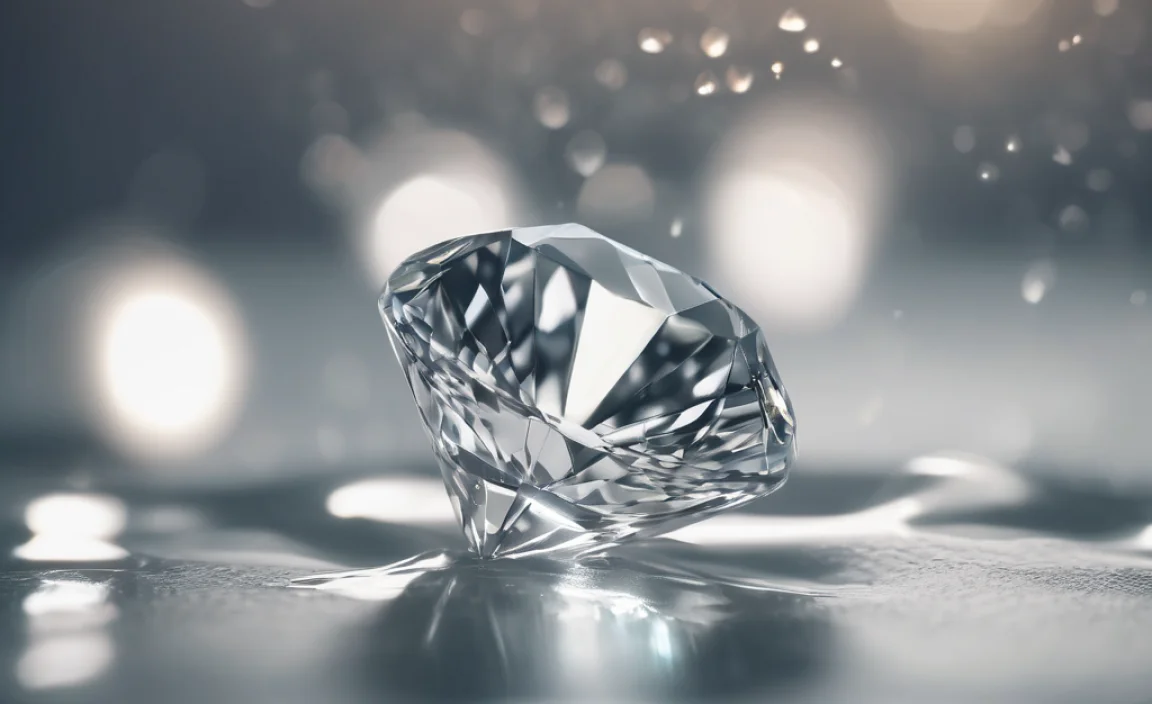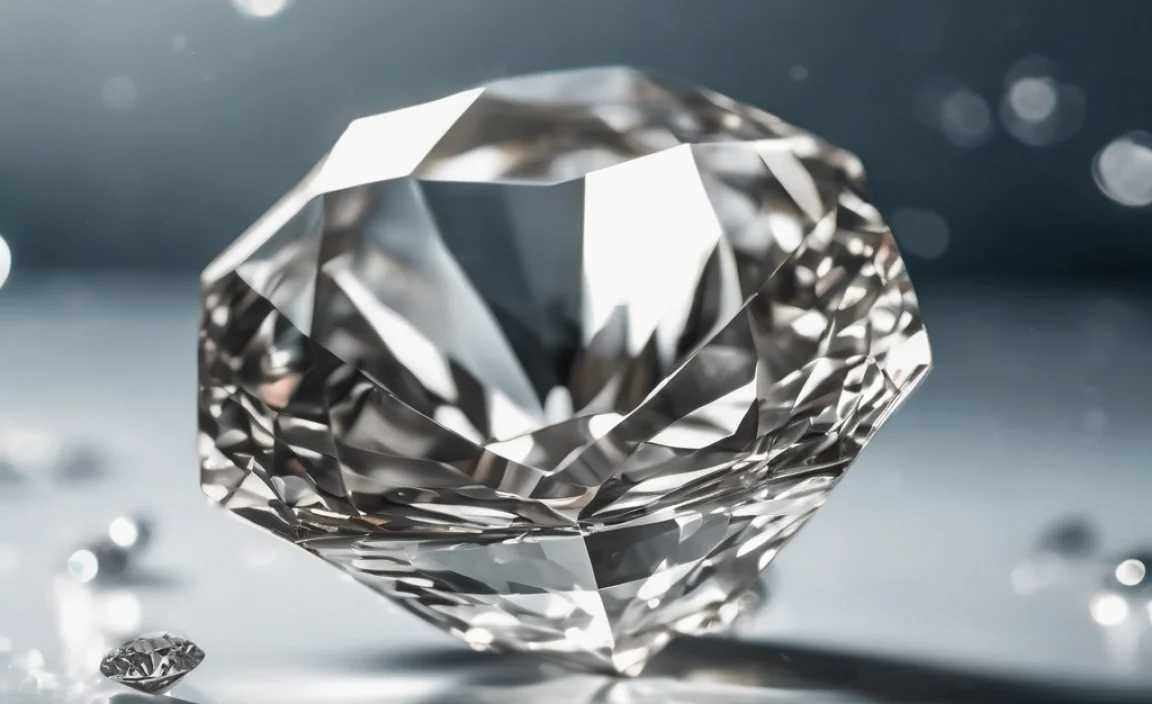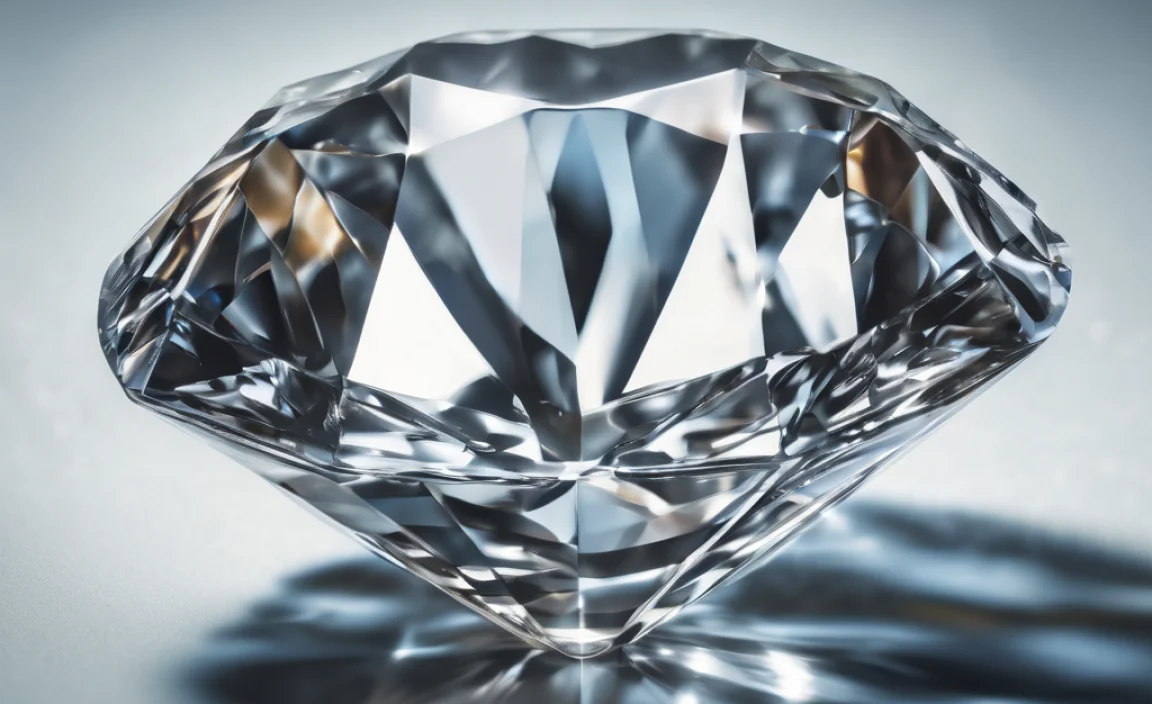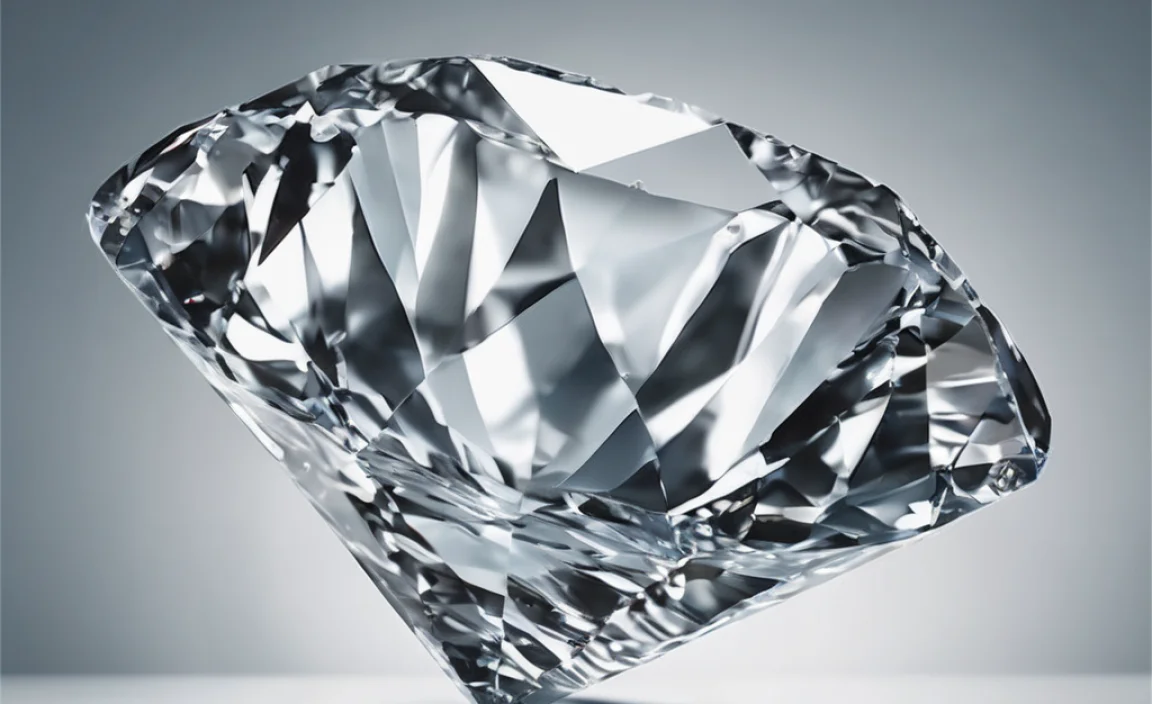Diamonds sink. Diamonds are denser than water, meaning they have more mass packed into the same volume. Anything denser than water will sink, while less dense objects float. So, if you drop a diamond in water, it’s going straight to the bottom.
Ever wondered what happens when you drop a diamond into water? It’s a simple question, but the answer tells us a lot about what makes diamonds special. We’ll walk you through the science behind why diamonds sink, and also explore what this means for identifying real diamonds. It’s easier than you think, and you’ll feel like a gem expert by the end!
Ready to dive in? We’ll cover:
- Why density matters when it comes to floating and sinking.
- How to quickly test if a diamond is real using water.
- Some interesting facts about diamonds that you might not know.
Understanding Density: Why Things Float or Sink

Let’s get down to basics. Why do some things float, and others sink? It all comes down to something called density. Density is how much “stuff” (mass) is packed into a certain amount of space (volume). Think of it like this: a brick and a sponge might be the same size, but the brick is much heavier because it’s denser.
Density Explained
Density is calculated by dividing an object’s mass by its volume. The formula looks like this:
Density = Mass / Volume
If an object is denser than water (meaning it has more mass packed into the same amount of space), it will sink. If it’s less dense than water, it will float. Simple as that!
The Density of Water
Water has a density of about 1 gram per cubic centimeter (1 g/cm³). This is our benchmark. Anything with a density higher than this will sink in water, and anything lower will float.
How Density Affects Everyday Objects
Think about a few common examples:
- A wooden log floats because wood is less dense than water.
- A metal spoon sinks because metal is denser than water.
- A cork floats because cork is less dense than water.
You see density in action all the time without even realizing it!
Diamond Density: Why Diamonds Sink

Now that we understand density, let’s talk about diamonds. Diamonds are made of carbon atoms arranged in a very tight, strong structure. This tight arrangement makes them incredibly dense.
The Density of Diamonds
The density of a diamond is about 3.5 grams per cubic centimeter (3.5 g/cm³). Remember, water’s density is only 1 g/cm³. Since 3.5 is much greater than 1, diamonds are significantly denser than water. That’s why they sink!
Comparing Diamond Density to Other Materials
To give you a better idea, here’s a quick comparison table:
| Material | Density (g/cm³) |
|---|---|
| Water | 1.0 |
| Diamond | 3.5 |
| Aluminum | 2.7 |
| Gold | 19.3 |
As you can see, diamonds are denser than aluminum but much less dense than gold. This difference in density is due to the atomic structure and the way the atoms are packed together.
Why This Matters
Knowing that diamonds sink can actually be useful. It’s a simple way to test if a stone is likely to be a real diamond. While it’s not foolproof, it’s a good first step.
The Water Test: A Simple Way to Check a Diamond

Want to quickly check if that sparkly stone is a real diamond? The water test is a super easy way to get a clue. All you need is a glass of water and your stone.
Step-by-Step Guide to the Water Test
- Get a Glass of Water: Fill a clear glass with water. Make sure it’s deep enough to fully submerge the stone.
- Drop the Stone: Gently drop the stone into the water.
- Observe: Watch what happens. Does it sink or float?
Interpreting the Results
- If it Sinks: If the stone sinks, it’s likely a real diamond or another dense gemstone.
- If it Floats: If the stone floats, it’s likely not a real diamond. It could be cubic zirconia, glass, or another less dense material.
Important Considerations
Keep in mind that the water test isn’t perfect. Some fake diamonds, like cubic zirconia, are also dense and might sink. Additionally, if the “diamond” is set in a ring or other mounting, the metal could affect the outcome. This test is best for loose stones.
Why This Test Works
The water test works because of the density difference we talked about earlier. Real diamonds are denser than water, so they sink. Many common diamond imitations are less dense, so they float or hover.
Other Ways to Test a Diamond

The water test is a good start, but it’s not the only way to check a diamond. Here are a few other simple tests you can try at home:
The Fog Test
Diamonds conduct heat very well, so they don’t fog up easily. Here’s how to do the fog test:
- Breathe on the Stone: Hold the stone near your mouth and breathe on it, like you’re trying to fog up a mirror.
- Observe the Fog: Watch how quickly the fog disappears.
If the fog disappears almost instantly, it’s likely a real diamond. If the fog lingers for a few seconds, it might be a fake.
The Newspaper Test
This test works because diamonds refract light strongly. Here’s how to do it:
- Find a Newspaper: Place the stone on a newspaper with clear, dark print.
- Observe the Print: Look at the print through the stone.
If you can clearly read the print through the stone, it’s probably not a real diamond. A real diamond will bend the light so much that you won’t be able to see the print clearly.
The Sparkle Test
Diamonds have a unique sparkle due to their refractive properties. Here’s what to look for:
- Look at the Sparkle: Hold the stone under a bright light and observe how it sparkles.
- Check for Brilliance and Fire: Real diamonds have both brilliance (white light reflections) and fire (colored light reflections).
Fake diamonds often lack the same level of brilliance and fire as real diamonds.
When to See a Professional

While these at-home tests can give you some clues, they’re not foolproof. The best way to know for sure if a diamond is real is to take it to a professional jeweler or gemologist. They have specialized tools and knowledge to accurately assess the stone.
Tools Professionals Use
Jewelers and gemologists use tools like:
- Loupe: A magnifying glass used to examine the stone closely.
- Diamond Tester: A device that measures the thermal conductivity of the stone. Diamonds conduct heat very well, so this test can quickly identify real diamonds.
- Microscope: Used to examine the stone for inclusions and other characteristics.
What to Expect During a Professional Appraisal
When you take a diamond to a professional, they will typically:
- Examine the Stone: They’ll use their tools to closely examine the stone.
- Assess the Cut, Clarity, Carat, and Color: These are the “4 Cs” of diamond quality.
- Provide a Written Appraisal: This document will describe the stone and its value.
A professional appraisal can give you peace of mind and is especially important for valuable diamonds.
Interesting Diamond Facts
Diamonds are more than just pretty stones. Here are some fascinating facts that you might not know:
Diamonds Are Extremely Old
Most diamonds were formed billions of years ago, deep within the Earth’s mantle. They were brought to the surface by volcanic eruptions.
Diamonds Are Almost Pure Carbon
Diamonds are made of almost pure carbon. The carbon atoms are arranged in a very strong, rigid structure that makes diamonds incredibly hard.
Diamonds Are the Hardest Natural Material
Diamonds are the hardest naturally occurring material on Earth. This is why they’re used in cutting tools and abrasives.
Not All Diamonds Are Clear
While clear diamonds are the most well-known, diamonds come in a variety of colors, including yellow, blue, pink, and even black. These colored diamonds are often very rare and valuable.
The Largest Diamond Ever Found
The Cullinan Diamond, discovered in South Africa in 1905, is the largest gem-quality diamond ever found. It weighed over 3,106 carats!
FAQ About Diamonds
Do diamonds float or sink in water?
Diamonds sink in water. They are denser than water, meaning they have more mass packed into the same volume.
Can you test a diamond with water?
Yes, you can use the water test as a simple way to check a diamond. If it sinks, it’s likely a real diamond or another dense gemstone. If it floats, it’s likely not a real diamond.
Are fake diamonds also dense?
Some fake diamonds, like cubic zirconia, are also dense and might sink in water. However, many other fake diamonds are less dense and will float.
What is the density of a diamond?
The density of a diamond is about 3.5 grams per cubic centimeter (3.5 g/cm³).
What other tests can I do to check a diamond?
Besides the water test, you can try the fog test, the newspaper test, and the sparkle test. These tests can give you some clues, but they’re not foolproof.
When should I see a professional to check a diamond?
You should see a professional jeweler or gemologist if you want to be sure whether a diamond is real. They have specialized tools and knowledge to accurately assess the stone.
Why are diamonds so expensive?
Diamonds are expensive due to a combination of factors, including their rarity, the difficulty of mining and processing them, and the high demand for them.
Conclusion
So, the answer is clear: diamonds sink! Understanding why they sink – because of their density – opens up a whole world of interesting facts and simple tests you can do at home. While the water test and other DIY methods aren’t perfect, they can give you a good starting point.
Remember, if you’re dealing with a valuable stone or just want to be absolutely sure, a professional appraisal is always the best way to go. Now you’re armed with the knowledge to impress your friends with your diamond expertise!


